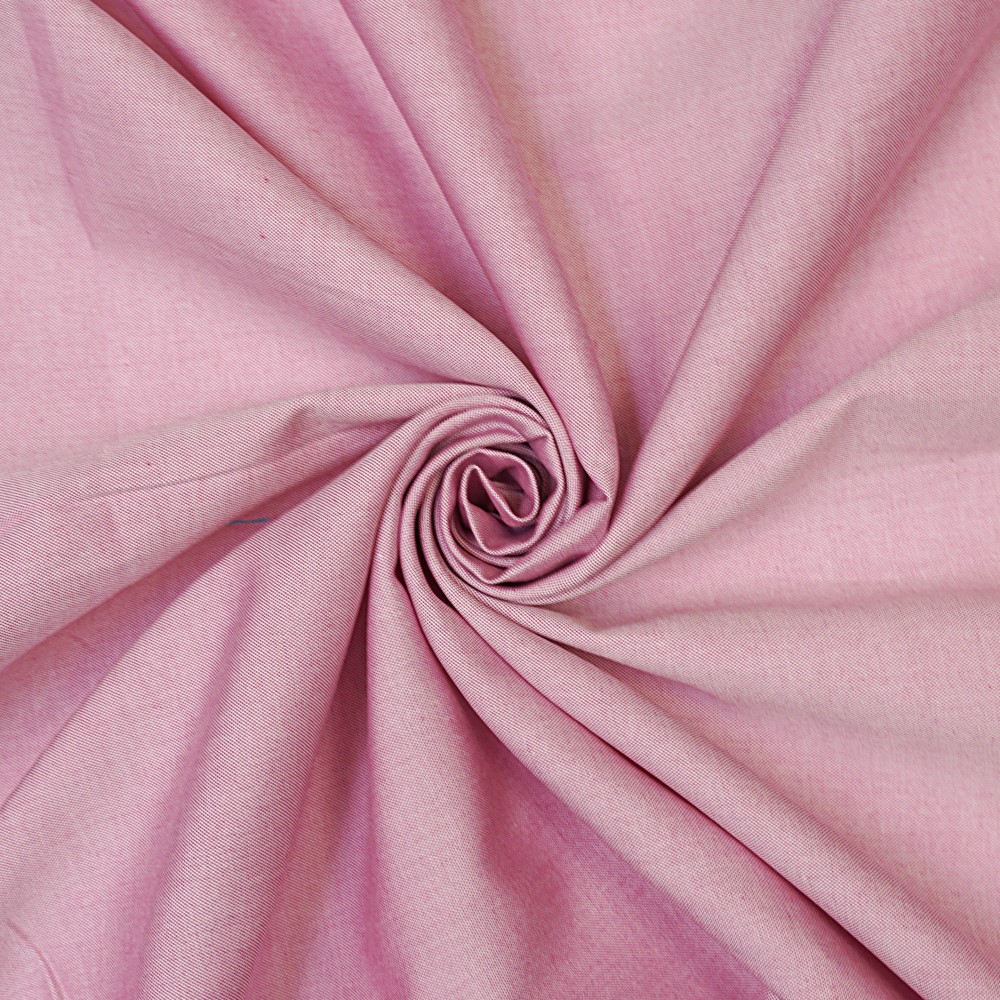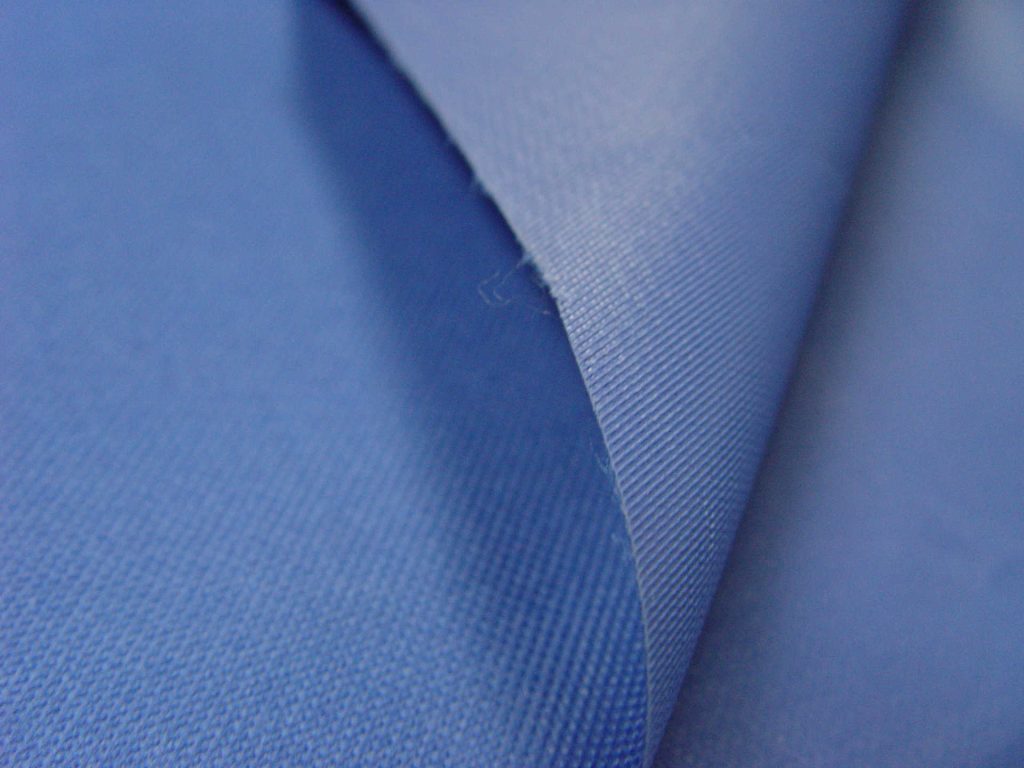Summary:
- Oxford fabric, a resistant material that remains wrinkle-free and doesn’t shrink, offers all the versatility your collection needs;
- Due to its thickness and exceptional color retention, Oxford fabric is frequently utilized in high-end uniforms and dresses;
- Test the fit of your fabric in a three-dimensional environment. Take advantage of the free trial of Audaces360 multi-solution today!
Recognized for its use in the manufacturing of uniform pieces, Oxford fabric is well-known for its thicker structure and resistance to fading.
It is a highly durable fabric that typically retains its shape and does not easily shrink or wrinkle. This makes it suitable for daily wear and frequent washing.
With its appealing qualities such as a subtle sheen and various textures, Oxford fabric can be found in a variety of clothing items, ranging from uniforms to dress shirts and elegant dresses.
If you are interested in knowing more about Oxford fabric, its different types, and its unique characteristics, you’ve come to the right place.
Sumário
This article will provide you with some insights on how to make the most of this fabric in your sewing projects.
Enjoy your reading!
What is Oxford fabric and what is it used for?
Oxford fabric is a notable textile known for its glossy finish, durability, and softness.
Primarily used in shirt manufacturing, it has found its way into a wide range of other garments, including blazers, skirts, dresses, and dress pants. Beyond clothing, it is also employed in decorative items such as pillows, curtains, and upholstery.
This versatile fabric can be crafted from 100% cotton, polyester, or a blend of both materials. While its applications have expanded over time, Oxford fabric initially gained popularity in the sportswear industry.
Learn more: Discover the functionality and benefits of 3D fabric to fashion
The history of Oxford fabric
Oxford cloth, a fabric with a rich history, originated in Scotland during the 19th century in a Scottish factory.
The creators, inspired by prestigious university institutions of the time, named their four fabric types after Harvard, Cambridge, Yale, and Oxford. Initially, the intention was to exclusively use them for shirts.
Although the university names brought a certain prestige, three of the fabric types failed to gain significant popularity. Consequently, their production was halted due to low demand.
However, Oxford cloth managed to carve out its own niche and its unique style gained fame among British polo players, who favored it for its breathable properties.
Ever since, Oxford cloth has maintained its popularity and utility, making it one of the most sought-after fabrics in the market to this day.
Types of Oxford fabric

While Oxford fabric is widely recognized for its use in shirt-making, there are several other noteworthy variations of this textile:
- Plain Oxford: This type of Oxford fabric is characterized by its softness and resistance to wrinkling. It is achieved by combining two lengthwise yarns with a heavier-weight crosswise yarn during the weaving process;
- Pinpoint Oxford: Pinpoint Oxford fabric blends the durability of Oxford fabric with lighter-weight materials. Depending on the specific treatment, this fabric often lends a more formal appearance to the wearer;
- Royal Oxford: Renowned for its exquisite beauty and lustrous finish, Royal Oxford fabric was specifically created for elegant garments. Its intricate weaving technique results in a unique texture and exceptional smoothness.
Learn more: 9 fabrics with the perfect fit to use in your fashion collection
What are the characteristics of this type of fabric?
As we can see, Oxford fabric has become a beloved choice for various purposes. It stands out from other fabrics due to several noteworthy features.
These include its excellent fit and insulating properties. Oxford fabric is both water and wind resistant, and it effectively prevents the accumulation of dirt between the fibers.
Moreover, the basket-like weaving technique enhances the garment’s durability and breathability.
Additional qualities of Oxford fabric include:
- Comfort when worn;
- Softness;
- Versatility;
- Elegance;
- Ease of care and washing;
- Resistance to wrinkling;
- Suitable for casual wear;
- Strength;
- Durability.
How to incorporate Oxford fabric into your fashion collection?

Oxford fabric offers a multitude of possibilities for incorporating it into various pieces within your fashion collection, making it an excellent investment due to its versatility.
While boasting a well-structured nature, its lightweight and comfortable texture make it ideal for crafting an array of garments. From shirts to dresses ranging from casual to elegant, as well as sportswear, aprons, and lab coats, Oxford fabric can elevate the look and feel of these items.
Moreover, the functionality of Oxford fabric extends beyond apparel. It finds utility in other articles such as tablecloths, fabric napkins, bedspreads, and curtains, enhancing their appeal and practicality.
Learn more: Check out 3 infallible tips to assemble a fashion product mix
Achieve perfect garment fit and streamline production with Audaces
When it comes to garment production, ensuring a proper fit is crucial before initiating the manufacturing process.
As we mentioned earlier, Oxford fabric offers qualities such as lightness, movement, and versatility. However, it’s essential to test the fabric fit in each garment.
This alignment between expectations and the creative team’s vision helps prevent rework and minimizes raw material waste.
In this modern era, technology plays a pivotal role in streamlining workflows and increasing accuracy.
Specifically, there are software programs available that enable 100% digital production, significantly reducing or eliminating the need for physical prototypes.
Audaces offers comprehensive solutions to help you in this process! Discover some of them below:
Audaces Fashion Studio
When it comes to simplifying the creative process and expediting approvals, Audaces Fashion Studio emerges as the ideal choice!
This innovative system provides you with the freedom to work within a practical, intuitive, and three-dimensional environment.
With Audaces Fashion Studio, you can engage in lots of activities that enhance your design process.
Simulate garment fit and experiment with various textures, materials, and prints, all within the software.
Additionally, you have the opportunity to test the movement of your designs on hyper-realistic avatars walking down a virtual catwalk.
Audaces Idea
For those seeking to optimize communication and streamline collaboration between the Creation and Modeling sectors, Audaces Idea is the perfect software solution.
With its advanced technology, Audaces Idea provides a comprehensive 360º view of your collection, facilitating the testing of different models, estimating costs, and seamlessly integrating technical drawings and specifications.
Audaces 3D
If your company utilizes digitized patterns, Audaces 3D can be a powerful asset, allowing you to bid farewell to manual prototyping.
Pattern makers and technical development professionals can leverage Audaces 3D to:
- Approve drawings and models
- Verify the fit and wearability of garments
- Digitally approve the initial prototype
- Reduce the number of physical samples required
- Save time and costs associated with prototyping
- Foster more sustainable processes
- Create rendered images for marketing and sales
- Enable a true virtual fitting room experience
Now that you have gained a deeper understanding of the origin, potential applications, and characteristics of Oxford fabric, why not consider incorporating it into your collections?
Download our e-book to explore other essential fabric types crucial for your production:
FAQ
Oxford fabric is a notable textile known for its shine, softness, and resistance. As a result, it is primarily used in the manufacturing of shirts and uniforms.
There are three main types of Oxford fabric: plain, pinpoint, and royal. Each type has its unique characteristics and appearances.
Oxford fabric is incredibly versatile, making it suitable for various pieces in your fashion collection. You can utilize it for shirts, dresses, blazers, sportswear, aprons, and lab coats.










